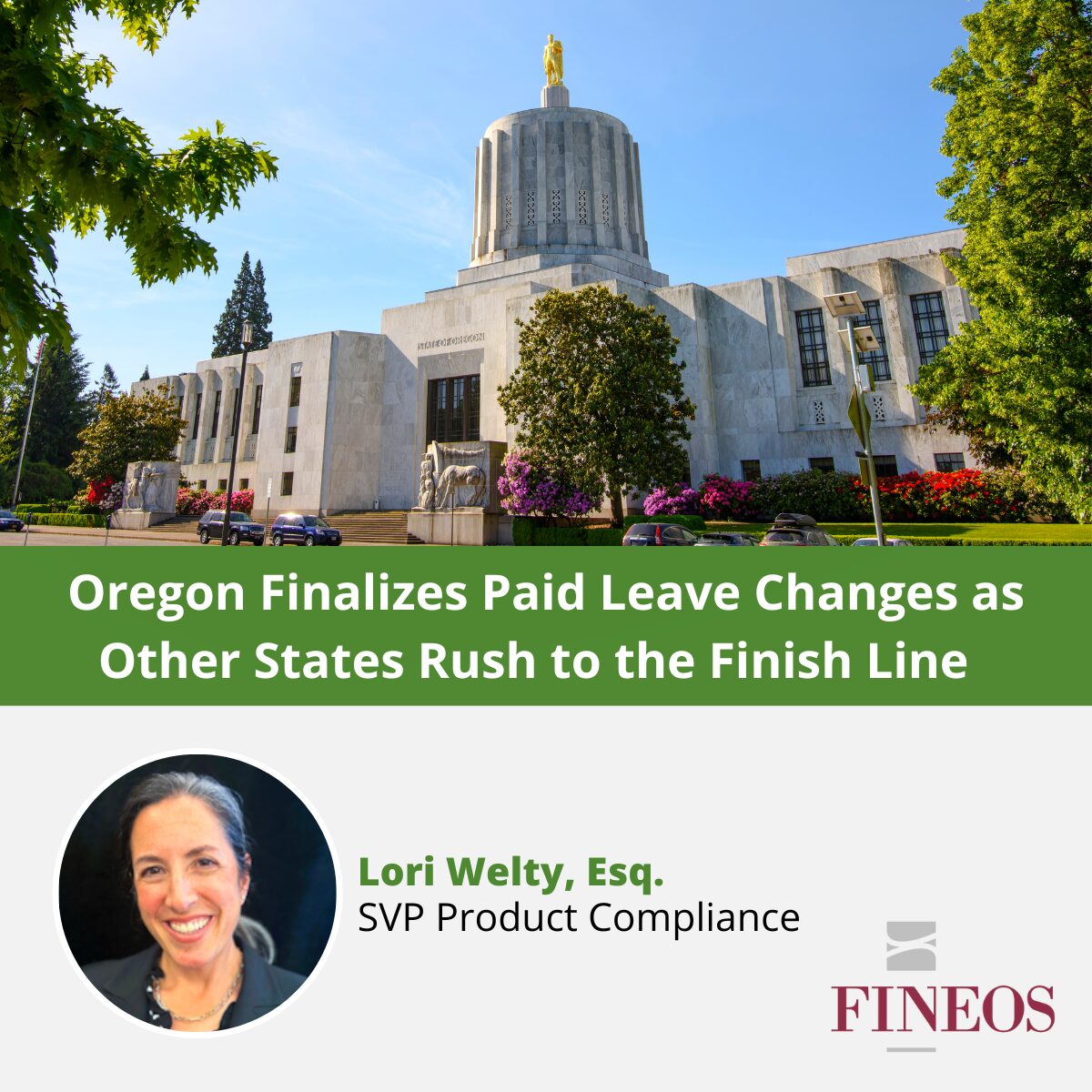The fall of 2020 has presented a unique set of challenges across America when it comes to public emergencies. The country, and indeed the globe, continue to battle the COVID-19 pandemic and parts of the United States are also battling other natural disasters such as hurricanes and tropical storms in the Southeast and record-breaking wildfires in the mountains and the West. If 2020 has taught us anything, it’s the need for continuous workforce flexibility. The fall of 2020 is underscoring companies’ need for agility between offering remote work and pivoting to leave of absence and back again as employees face illness, quarantine, school and daycare closures, evacuations, and the need to clean up after natural disasters.
Amidst all of this uncertainty and acts of nature, employers can and should still plan. This planning should focus on flexing for uncertainty, also known as business continuity planning. In strategizing, essential considerations must include future disaster or public health emergency preparedness with remote work and flexible leave of absence. Indeed, the onslaught of recent legislation will require it. These three points should be integral for any employer’s business continuity strategy: acknowledge, assess, analyze.
Emergency Preparedness and Business Continuity Planning Is Not New
COVID-19 isn’t the first time a crisis has required a shift toward telecommuting, though the COVID-19 pandemic is on a global scale compared to most crises. In the United States, following the events of 9/11 and the subsequent anthrax attacks that forced many government and New York offices to close, remote work became necessary. Many recent natural disasters, such as hurricanes and devastating wildfires, have additionally required remote work as a business continuity necessity.
For example, during hurricane or wildfire disasters, employers have found that granting remote work or leave as an accommodation could be necessary because:
- an employee with a nervous or stress disorder might have their condition exacerbated by the disaster or public health emergency experience;
- an employee with a bad back or other physical ailment could have aggravated the condition or injured themselves while cleaning up after the natural disaster; or
- an employee’s child’s school could close due to flooding from the hurricane or impact from a fire or earthquake.
Compliance with Legislation and Regulations Require a Strategy for Uncertainty
Employers may find that they have no choice but to consider remote work and flexible leave as strategies for future public health emergencies because most state and local paid sick and safe leave laws, and many statutory disability and paid family leave laws (currently more than 27 of such paid leave laws), require a paid leave of absence due to a public health emergency, including for such reasons as:
- closure of the place of business by order of a public official due to a public health emergency;
- an employee’s need to care for a child whose school or place of care has been closed by order of a public official due to a public health emergency; or
- to care for oneself or a family member who is ordered to isolate or quarantine due to exposure or illness of a communicable disease.
Many of these reasons requiring paid sick, safe, or family leave during a public health emergency would not prevent an employee from telework if it were available. Thus, employers who can accommodate remote work during the next public health emergency or natural disaster should weigh the benefit of employees’ continued work at full pay with employees’ absences and payment of sick leave or paid family leave. But it is critical to understand that while employers can offer remote work over a leave of absence, employees often have an absolute right to take the leave over the remote work if they choose.
How Can Employers Plan the Pivot?
Most employers are still managing on a day-by-day basis without a real strategy or idea what the winter and 2021 will bring in terms of workforce stability. With such uncertainty, employers can and must have a business continuity pivoting plans. This means taking the following steps:
Most employers are still managing on a day-by-day basis without a real strategy or idea what the winter and 2021 will bring in terms of workforce stability. With such uncertainty, employers can and must have a business continuity pivoting plan. This means taking the following steps:
1: Acknowledge: acknowledge the unknown; there is likely no new normal or any normal, and constant change is here for the foreseeable future.
2: Assess: Designate a person or group to assess the possibilities for remote work and the requirements around leaves of absence. As noted above, more and more states are passing public health emergency laws that cover quarantining, illness, and possibly emergencies related to natural disasters such as wildfires and hurricanes. This person or group must understand
a) what is possible at the workplace regarding remote work and flexible or reduced schedules; and
b) compliance with applicable leave and accommodation laws.
3: Analyze: Have absence and accommodation data at your fingertips. Whether outsourcing absence and accommodations, such as remote work, to an insurance carrier or third-party administrator (TPA) or handling it in-house, recordkeeping and data analysis are key. The best thing an employer can do during this period of uncertainty is set up, or refine, the ability to know where workers are: are they working remotely or on an unpaid or paid leave of absence? When is the best time and what is the best way to return them to the worksite? When does their leave exhaust? Are they productive working from home? Ensuring you have easy access to such data and reporting will enable agility and quick decision making, two important aspects of emergency preparedness.
Your New Strategy: Business Continuity Planning for the Remote Work and Flexible Leaves
COVID-19 may permanently change how and where work occurs. As seen in the past 20 years, shifting as many people as possible to remote work is sometimes a necessary response to a crisis and no longer just a job accommodation for disabled or pregnant individuals. Indeed, the myriad of laws that require leaves of absence and accommodation due to such crises make remote work and flexibility an unavoidable reality. And if the laws from this past year and the past decade are any indication, the trend is toward legal justification and legal flexibility for remote work accommodation and leaves of absence. As such, when planning for the upcoming year, employers should acknowledge, assess, and analyze. Doing so will prepare employers for success during uncertainty.


